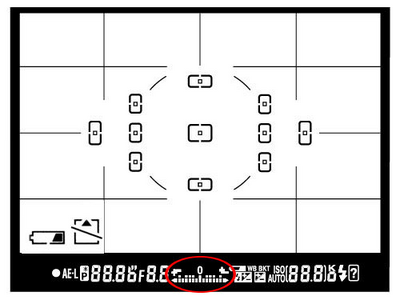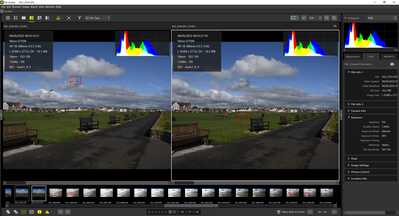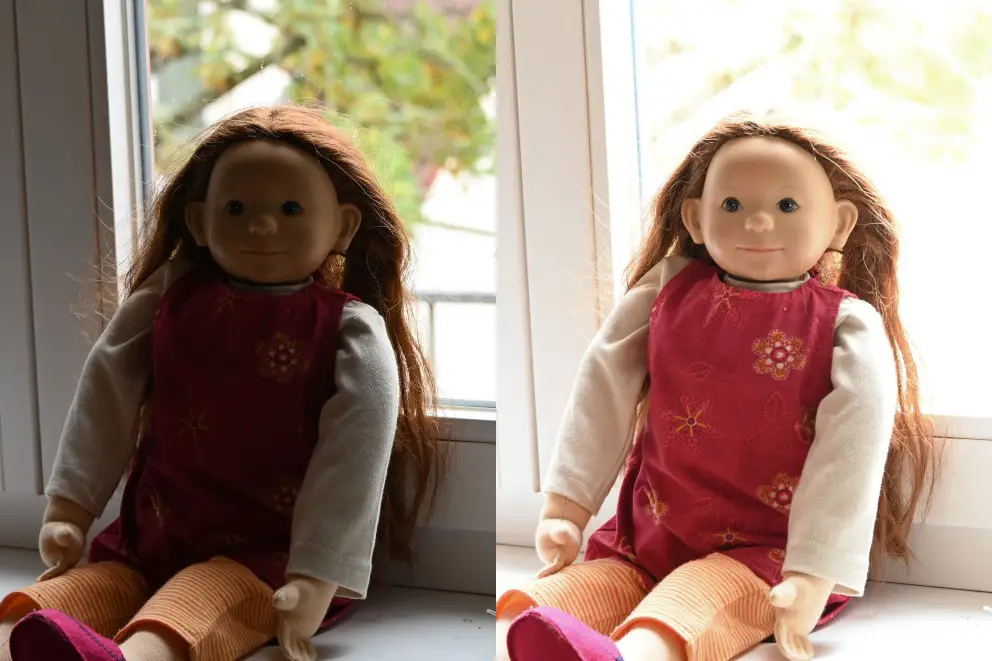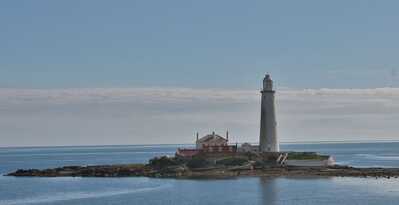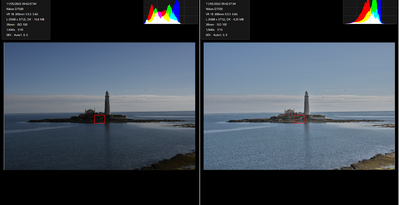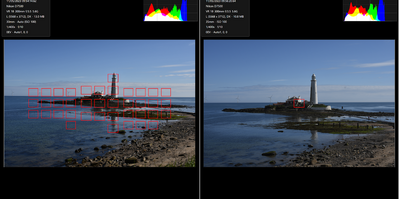Hi,
I would appreciate if you can help me with metering and focusing. I understand what metering means( Understanding Metering and Metering Modes (photographylife.com) )and what focusing means ( Understanding Focusing in Photography (photographylife.com) ). Problem for me is in using them together in manual mode to take portrait , landscape, ... photos.
Thiru
Glad to (try to) help you out, but what is it that you're actually struggling with?
Regarding metering in manual mode, you need keep eye on the "meter bar" as described on in the PL tutorial: in general try to keep it at the center ("0") to have a proper exposure. You change this exposure by dialing in the aperture and/or shutter speed and/or ISO (that's the manual part in 'manual mode' ;-)).
You can also use the histogram for this ( https://photographylife.com/understanding-histograms-in-photography). If you have a digital camera, you can also show the histogram in live view on your camera.
Btw, what is a "proper exposure" depends on what you want as the photographer :) It's not wrong to over- or underexpose if it suits your subject or that is what you want. This is a whole different topic :)
Regarding focussing in manual mode, it's turning the actual focus ring on your lens yourself :) Maybe you have to set your camera to manual focussing mode. Nowadays a lot of camera's have manual focus assistance features like focus peaking that help you to 'see' what parts are actually in focus.
Both metering and focussing can be done manually, but you don't have to (you can focus manually and set the camera to "auto" mode for all the rest or vice versa) - they are separate functions. It also doesn't mind what kind of photographs you take. I guess in landscape you have more time so it's easier to go in all manual, but for fast(er) action (sports, weddings) it might better to let the camera do a bit more of the work ;-)
Hope this is of any use? :)
Otherwise just ask away!
Thank you Ronald.
What I am trying to do is to come out of Auto mode on my Nikon D7500. I understand the histogram, the metering bar, exposure compensation etc. Using them all together is the problem. I am confused with the squares in the metering and focus points.
What exactly I need to do take photos shown in section 2, 7 and 9 Exposing to the Right Explained (photographylife.com)
The tiny squares scattered across the screen are the focus points the camera can use when in autofocus mode. You select a single focus point, or multiple points (zone) and the camera will use these to focus on when in Auto Focus mode. If you are in manual focusing mode you can ignore them, but you could use them as a help/assistance to make sure the intended part of your frame is in focus (see https://onlinemanual.nikonimglib.com/d7500/en/13_focus_02.html under The Electronic Rangefinder section)
The metering "squares" (symbols) simple define what part of the frame the camera uses for determining the exposure (the values shown in the metering bar) ( https://onlinemanual.nikonimglib.com/d7500/en/15_exposure_01.html ). In the more auto-modes the camera then will decide the aperture / shutter speed / iso values, but in manual mode you still decide these values (and you use the metering bar values as a guide). Personally, even in manual mode I set it to Matrix mode or whatever it is called on my Fuji camera and be done with it :))
Does this make any sense? :)
"Does this make any sense? :)" Yes and No.
Not sure if you can see the information on the screenshot clearly. I have taken two shots using manual mode. Manual exposure Matrix metering Aperture f/8, SS 1/640s ISO 100. Focus point(FP) is in the cloud for the photo on the left. FP for the right photo is in the grass. What should I have done for the histogram to extend to 255.
TX
Ah, so you would want the image to look brighter? Well, you could have set a slower shutter speed (1/500s, 1/400s or something like that), or a larger aperture (f/7.1, f/5.6 or something like that) to let in more light. In theory you could've upped the ISO to 200 as well, but I don't know, I think I would've opted for the slower shutter speed in this case since there aren't any fast moving objects (well apart from the bird maybe).
That said, in that program you are using (NX Studio) you can increase the exposure by 0.5 or so (EV compensation or however it is called). This is a JPEG though, so you can't stretch it too much (compared to a raw image) so don't go overboard. Also, exposure is already not too bad though :)
Thank you Ronald for the information and suggestions.
Thank you Ronald for the information and suggestions.
No problem, hope it is of any use :)
It looks like I also need to master Nikon AE-L / AF-L Button (photographylife.com)
Well, if you're in full manual mode I don't think you'd need to do this (since you set everything yourself - focus and exposure - the camera will keep these settings until you change them again). But in any of the other semi-automatic modes (P-, A-, S-priority) or when using (continuous) auto-focus, this might be helpful.
I don't really use the AE/AF-lock functions so I'm not sue if I can help you out with this, but please do not hesitate to ask anyway ;-)
Cheers.
@thiru apologies for the delayed reponse - life gets in the way sometimes ;-) Well, this is always going to be tricky because if you expose for the doll, you'll get an overexposed window and vice versa ... to be honest, I would move the subject away from the window and maybe use the light coming through the window to light the subject.
If you don't use a flash, you could also try to use a reflector (think simple: piece of white cardboard, or aluminum foil can work as well) to shine a bit of light onto the subject.
If you want to do something in post-processing: try to get a 'middle-ground' when taking the photo and lift the shadows and bring down the highlights in the editing software you use. Make sure to shoot in raw (and edit the raw file, not the jpg).
You could also do multiple exposures (one for the doll, one for the window) and blend them afterwards (HDR technique), but I guess that's arguably the most extensive thing to do and not typically a 'beginner' thing to do.
Oh, maybe you can crop the over exposed image and crop-out the overly bright bits.
@ronaldsmeets
Thank you Ronald. Much appreciated. No need to apologise. "I would move the subject away" - sometimes you cant move the subject and flash would not work as in this situation.
This is a post processed (in Luminar) image. Light house looked almost like that. But my original shots taken hand held did not look like that. My question is how can I take the shot to look like what I see with my eyes.
Have I used the correct metering? Have I used the correct focusing? Can I do anything to move the highlight are of the histogram to the right? If I have used low shutter speed, higher aperture or higher ISO I would have lost the details in the bright area.
Original is on the left and the post processed is on the right.
Another two photos of the light house taken from a location closer to the first location with different focusing.
Thank you Ronald for trying to help me.
Just to add a couple random thoughts.
Are you shooting raw? This can add some latitude in post processing.
Are you using a tripod? You can push the shutter speed a bit slower without needing as high an iso if the camera is steady. Use a 10 second delay and set your camera for mirror lock up and delayed exposure to reduce shutter shock.
Does your camera have blinkies? If so you can raise the exposure higher until the blinkies start to flash. This will capture more of the dark areas and you can adjust in post. If no blinkies use the histogram to raise the exposure while keeping it just near but not climbing the right wall. Same idea, you can adjust it in post once you've captured as full of a range as the camera is capable of.
@bleirer Thank you Bleirer for all your suggestions. Much appreciated. Yes I do both raw+jpg and raw helps me to get more out in post processing. No I do not use tripod as it is another item that would add to the load I carry. I avoid carrying more load because of my back and knee problems. Yes I look at the blinkies and the histogram.
